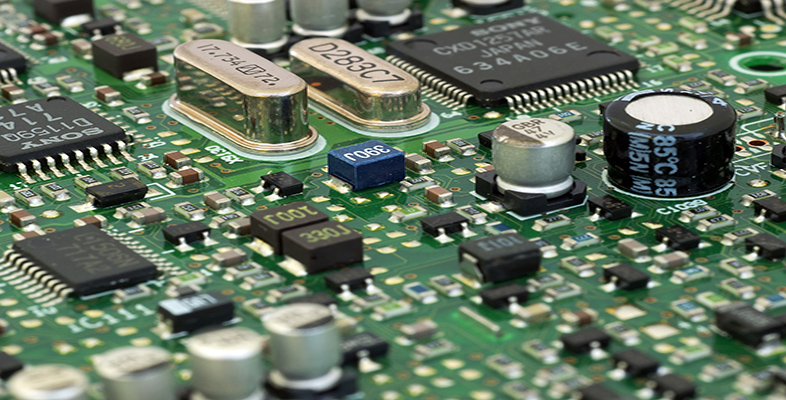3.1 Digital filters
You read about analogue filters in Section 2, so you know that they are electronic circuits made up of components such as resistors, capacitors and inductors connected together to produce the required filtering effect. In comparison, a digital filter uses a digital processor to perform numerical calculations on sampled values of the signal to be filtered. The processor could be a general-purpose computer such as a PC, but it is much more likely to be a specialised digital signal processor (DSP) chip, which is designed to carry out the intensive mathematical operations used in digital signal processing quickly and with low power consumption. The low power consumption is important because it means that purpose-designed DSP chips can be used in mobile devices such as phones and tablets.
A potential use for a digital filter with low power consumption is described by Asgar and Mehrnia (2017), who propose using a digital filter in an electrocardiogram (ECG) heart-monitoring system. Figure 14 is a block diagram of the system, taken from their paper. It shows a sensor connected to the surface of the user’s skin to monitor their heart function. This signal is then conditioned. Typical actions here might be to amplify and remove aliases from the signal; then an analogue-to-digital (ADC) converter is used to change the signal from analogue to digital form prior to it being filtered.
In the paper, the authors describe six different sources that can cause noise to contaminate the measured signal. Three of these sources are as follows:
- electrode contact noise, which is due to electrode ‘popping’ or a loose contact with the skin
- instrumentation noise, which is due to radio-frequency interference from other equipment (e.g. implanted devices such as pacemakers)
- electromyographic (EMG) noise, which is induced by electrical activities of skeletal muscles during periods of contraction.
This shows the variety of noise sources that are associated with specific applications and the insights that are needed to understand the noise sources in any filter application. The filtering solution proposed by the authors uses a low-complexity, linear-phase digital filter design.
The next section will describe in more detail the signals that are found in digital systems.

